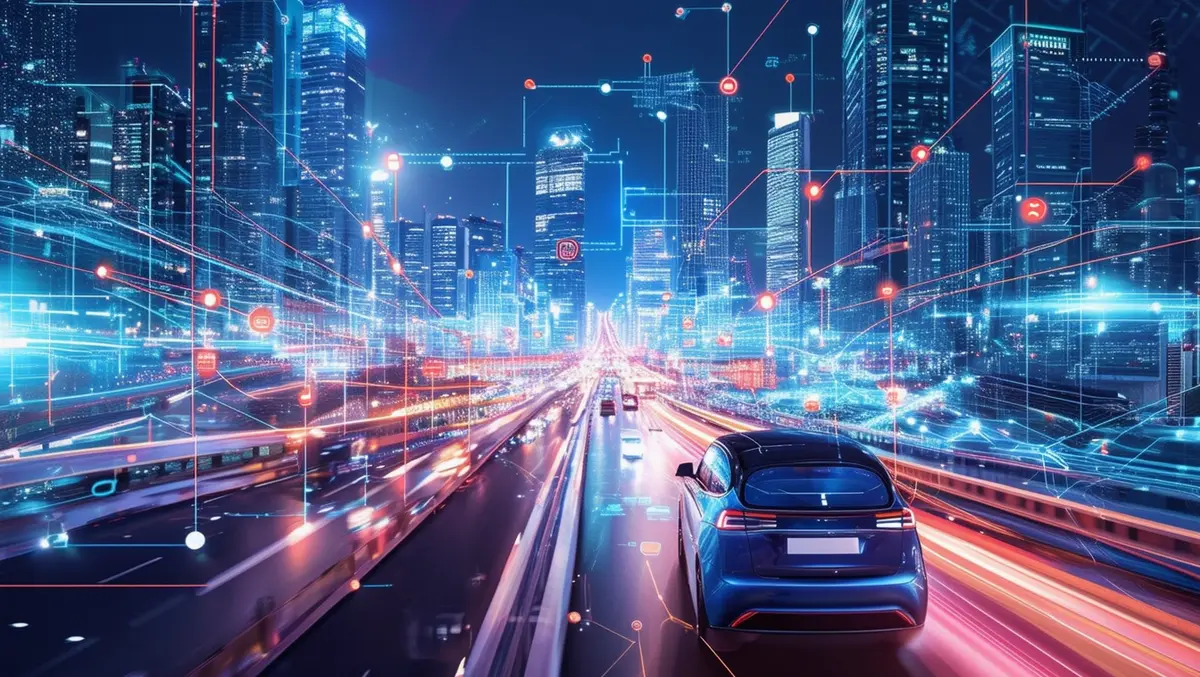
Telematics is helping to accelerate economic growth across APAC
The Asia-Pacific (APAC) region is the world's economic growth engine, powered by a growing consumer class, a strong manufacturing base and an accelerating innovation sector. Much of that growth has been powered by technology, and in fact one recent report found that in Southeast Asia could be a US$1trn growth opportunity.
Often, my own corner of the tech industry - vehicle telematics - is thought of as niche; a sub-category of the Internet of Things, interesting only to fleet managers who handle large numbers of vehicles. Telematics, at its core, is about retrieving data generated by vehicles, and uploading it to the cloud where it can be analyzed. It's no surprise that fleet managers have more interest than most, but telematics helps to underpin new technologies that are reshaping the way we live and improving the consumer experience.
It's having a bigger impact than you think. Here are three great examples – all of which have either transformed the Asian economic landscape in the last decade, or which will change it dramatically over the next.
Transforming the rideshare industry
It wasn't so long ago that arriving in a new city would mean taking a chance on a metered cab in unfamiliar surrounds. Now, you can be sure that you'll get the fastest route from the airport to the hotel, with an agreed upon price, and most likely in a well-maintained car. Telematics helps to underpin all of this, delivering a better, safer service to customers in the process.
Telematics solutions help providers track their cars, maximize fuel efficiency and conduct predictive maintenance. They also monitor driver behaviour, both through cameras, which are integrated into many solutions – and by monitoring the vehicle itself for sudden braking, speeding, idling and other worrying driver behaviour. This not only ensures a safer ride, but helps to better maintain the resale value of the vehicle.
Having visibility over a fleet and its costs has helped to make the rideshare leasing model financially possible. This model means that drivers don't need to own their own car. It usually means customers get a nicer car too. That might sound like a minor perk on a short ride, but newer cars are safer and more fuel efficient. It's also a nicer working environment, which means more drivers are willing to do the job.
One additional perk will be delivered to customers from the telematics device itself; the next generation of devices will enable ride share devices to offer in-car wi-fi to customers.
To your door: powering eCommerce
It wasn't so long ago that groceries and other essentials required a trip to the store. E-commerce has made shopping more convenient than ever, and few regions have adopted it with as much gusto as APAC.
eCommerce is another area where telematics have proven essential. In many APAC markets, home grown heroes battle for market share against Chinese and US competitors. For this reason e-commerce is a fiercely competitive industry where margins matter. Businesses need technological solutions to drive efficiency at every stage of the supply chain. Managing costs and driving efficiency is exactly what telematics solutions do.
In many cases, the cost of last mile delivery has been one of the toughest nuts to crack. But telematics helps to address exactly this problem, enabling service providers to better track their costs – such as fuel and maintenance - and reduce them, while also enabling the most efficient possible delivery.
Accelerating the EV transition
Telematics are also helping to accelerate the transition to electric vehicles. The case for making the switch has only grown in strength as the climate crisis has grown in urgency. That's particularly true in Asia, which is a key driver of carbon emissions and will be among the most affected regions.
China is the undisputed leader of EV deployment, both building and selling more EVs than any other country. According to the International Energy Agency, electric cars sales in China could hit 10 million in 2024, accounting for about 45% of all car sales in the country. One key component of China's success was operational support for taxis and bus services to adopt EVs.
The entire region has high hopes for an electric future. And in many cases other markets in the region might repeat China's approach, treating public transport as the low hanging fruit. Busses (for example) adhere to set paths and can be recharged at the depot, which means that range anxiety isn't such a problem and the transition can start before the charging infrastructure is built out (which seems to be the biggest problem to solve in many markets).
But even if fleets act as flywheels for EV adoption, they must make the transition in the most cost-efficient way, and that's usually a data intensive exercise. A large part of the decision is figuring out which vehicles to retire and replace with EV stock, and calculating the possible savings. Fleet managers also need to figure out which locally available vehicles will do the job. Telematics helps with all of these issues.
Accelerating change
These are just three examples among many use cases. But they are clear examples of how telematics can act as a great catalyst for economic change.
The region's organisations are really only scratching the surface of what telematics might offer. Vehicle telematics can generate data on just about anything that involves a car or truck, which means there are applications in urban planning, waste management, traffic management and many other areas – and a number of our customers have been using the technology for these purposes.
So next time you book a car to take you to the airport or order groceries through an app, remember that telematics solutions are crucial to delivering those services, and possibly many others in the future.

